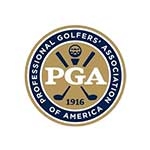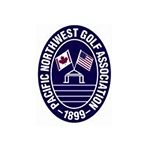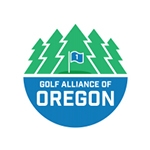Rule of the Month: Think Globally, Act Locally
By Sr. Rules Officials: Pete Scholz and Terry McEvilly
Click Here for the Rule of the Month Archive
Local Rules
Happy New Year and welcome to 2021. We wish everyone a prosperous and healthy year. May this be the year that we hit them long and straight. Throughout the year, the Rules Department at the OGA answers many questions regarding Rules situations throughout Oregon and Southwest Washington.
The majority of these situations happen during casual play between friends, but many arise during club championships and higher level tournaments. Before any question is answered, we generally have a few follow-up questions to insure a proper response. The Rules handle situations differently depending on several factors. For instance, is it match play or stroke play, individual or partners, gross or net scoring? And the most important question is whether there were any Local Rules in place for the competition?
Local Rules (LR) are Rules for a competition or general play that the Committee may adopt to cover local situations. They must conform to the principles of the Rules and may not be arbitrarily created simply because the Committee prefers a Rule to be different. Players should be notified when Local Rules are in effect by either posting them in the clubhouse or listing them on the scorecard or a Notice to Players.
For this month’s article we feel it is very important to stress the importance of proper Local Rules by listing those that the OGA recommends for casual and tournament play.
- Model Local Rule G-9 Replacement of Club that is Broken or Significantly Damaged. This LR modifies Rule 4.1b(3) and allows a player to replace a club that is broken or significantly damaged during the round. However, it does not allow the replacement of a club that has been damaged due to abuse, nor may a club be replaced simply because the clubhead is cracked.
- Model Local Rule E-12 Ball Played From Outside Relief Area When Taking Back-On-the Line Relief. This LR was introduced by the USGA shortly after the release of the 2019 Rules of Golf when it became obvious that the procedure when taking back on the line relief still needed a bit of polishing. This LR allows a player to play without further penalty from outside the relief area after dropping in the relief area provided the ball comes to rest within one club-length of where it first touched the ground when dropped.
- Model Local Rule E-5 Alternative to Stroke and Distance for Lost Ball or Ball Out of Bounds. Local Rule E-5 is designed for general play and casual rounds to assist the pace of play when a provisional ball hasn’t been played. It allows a player whose ball is lost or out of bounds to continue playing without having to return to the spot of the previous stroke. This LR should not be used for tournament play.
- Model Local Rule A-4 Internal Out of Bounds. Any course that has an internal out of bounds to prevent players from playing from a particular area during the play of a certain hole must have this LR in place to eliminate confusion. For example, if the course wants to prevent players from shortening a hole by playing down a different hole, they could mark the other hole with an internal out of bounds and specify the status of the stakes used.
- Model Local Rule E-1 Dropping Zones. Dropping zones should be considered when there may be problems with players proceeding under the normal relief options. However, when a dropping zone has been established for relief of any kind, a LR must also be introduced and the players made aware of it. This LR emphasizes the importance of having Local Rules. Without the LR in place, players would be dropping in a wrong place.
- Model Local Rules E-2 Cleaning Ball and E-3 Preferred Lies. These two LRs make playing the game much more enjoyable when the condition of the ground is wet and muddy. Without these LRs in place, lifting or moving your ball when not allowed will get you a penalty. Always double check that the Local Rule is in effect before using the procedure.
- Model Local Rule E-8 Defining No Play Zones. A No Play Zone is any area that the Committee wishes to prohibit play from for any reason. The Local Rule defines the boundary of the No Play Zone and requires the player to take relief.
-
Model Local Rule F-1 Defining Abnormal Course Conditions and Integral Objects. This LR is very important because free relief is available for Abnormal Course Conditions but relief from an integral part of the course comes with a penalty. Every player should be aware of what the Committee has declared to be an integral part of the course. Taking free relief from an integral part of the course will get you the general penalty of two strokes in stroke play or loss of hole in match play.
In addition to the Local Rules mentioned above, we recommend that every course establish a Pace of Play Policy and a Code of Conduct to address situations such as slow play and the play of music. When precise policies such as these and Local Rules are implemented and clearly communicated, it protects the player and removes potential debate about the player’s actions. In other words, put it in writing.
There are approximately 75 approved Local Rules but we have covered only the ones we find most applicable to every course. A complete list of Local Rules and sample wording can be found on the USGA website.








